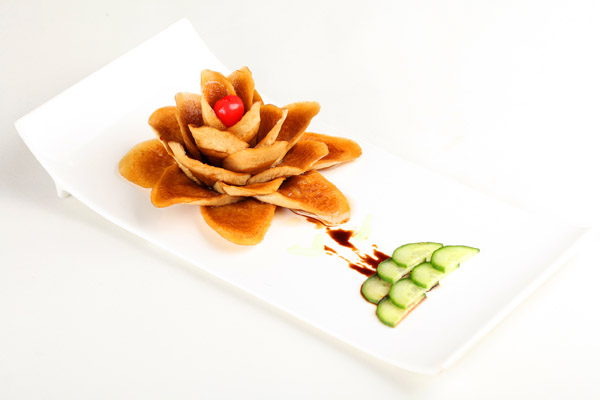 |
|
Pickled radish. [Photo provided to China Daily] |
Radish pickles are simply radishes salted to get rid of excess water, then macerated in vinegar and sugar and flavored with cloves of garlic and a few red peppers.
My favorite is the delightfully named watermelon radish, a large, green-skinned root the size of a small football with a lovely magenta center. It is named xinlimei in Chinese - "beautiful heart".
Pickled in apple cider vinegar with raw sugar and crushed garlic, it can be really addictive.
My spouse likes the green outer skin, which is very crisp when pickled. The secret is to cut the radish so that every slice includes a little strip of rind.
The other pickle we like making in winter is the Sichuan paocai, seasoned with red peppers and prickly ash berries. There is no vinegar in this pickle, which depends purely on natural fermentation.
We use an assortment of hand-torn Beijing cabbage, sliced carrots, beans, celery stems and radishes. These are placed in a glass jar, and cooled boiled water is poured in to completely cover the vegetables.
Ginger slices, garlic, red peppers and Sichuan peppercorns also go in, and the jar is covered and placed next to the radiator to hasten the process. A few days later, when tiny bubbles appear inside the jar, we know the pickling process has started. It takes about a week more for the flavors to fully develop.
After that, the pickle jar goes outdoors so the cold will keep it fresh.
Sichuan pickles are tart and spicy, but it is the texture that makes them so good. The cabbage chunks squeak when you bite into them, and the carrots and celery stalks stay crisp while retaining their natural flavors.
Korean-style kimchi is also popular in our house. This makes use of the giant Napa cabbages that are dirt-cheap in winter, as well as garlic chives, radishes and carrots. I like kimchi because it can be eaten at all stages.
Fresh, it has a crisp crunch that allows you to enjoy the sweetness of the vegetables. Matured, the fullness of flavor from the fermenting vegetables combines with the spicy chili flakes to make it an appetizing treat.
Old kimchi, too tart to eat on its own, is beautiful cooked in soups and stews.
Just one whole cabbage can last us all winter.
Winter pickles are a Beijing tradition that stems from the frugality of the past, when food was scarce and housewives scrambled to make the best of what they had.
Often, the best they had was what they planted in pots in the hutong or cheap vegetables when enjoying a glut. It is a disappearing tradition, as living standards escalate and modern logistics and horticultural practices improve.
But pickles are both delicious and healthy, and the art of making them should definitely be preserved.